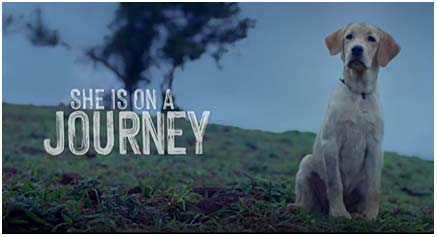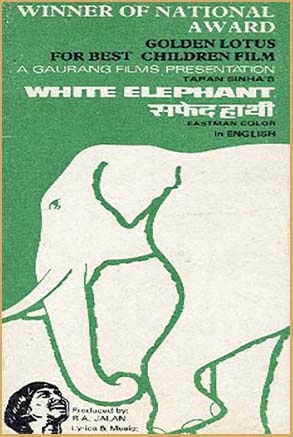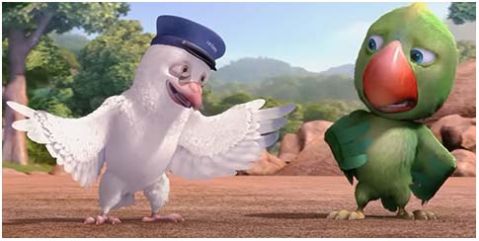Bow Wow: Exploring Animal Appeal in Children’s Films
Animals in films don’t just entertain but educate children about love, laughter, loyalty, loss and more, in a way that perhaps no human character can.
Last year, a wave of emotion swept the Kannada film 777 Charlie to super success, its appeal cutting across age and other barriers. The 2022 film explored the bonding between a stray dog Charlie and the lonely, negative protagonist, whose life it transforms completely. Audiences, which included some famous names, would speak with voices choked with feeling about its theme of ‘pure, unconditional love’. Not surprisingly, the film earned not only box office success but also critical acclaim, including the National award for best feature film in Kannada.

Image courtesy: https://www.youtube.com/watch?v=bmAnwpNyOVo
This ‘purity in love’ inherent in animal stories is a timeless and perennial favourite emotion in cinema created especially for children. It has been channeled in numerous films over the decades across the world. Think Lassie Come Home (1943) about a collie named Lassie who, after her destitute family is forced to sell her, escapes from her new owner and begins the long trek from Scotland to her Yorkshire home. Or then Marley & Me (2008), The Aristocats (1970), Old Yeller (1957), Dr Dolittle (1998), and The Jungle Book (2016); the list goes on.
Closer home, makers have explored many heart-warming tales of animal bonding in films crafted especially for children. Whether animation or live-action, animal characters effectively engage younger audiences, appeal to the childhood memories of older viewers, and often challenge social norms. They go beyond being a great source of entertainment, to evoke compassion and effectively transmit a valuable message to a broad audience.
As Rosil Sinha writes regarding the popularity of animals in animation films, children find animals easier to relate to and identify with. Sigmund Freud, considered the father of psychoanalysis, hypothesised that children saw themselves as equal to animals, as they found human adult behaviour more confusing and less relatable than the actions of animals. Further, much like children, animals are also instinctual by nature, with their emotions being simple and straightforward. It is no surprise that research indicates that many children prefer animal stories to stories with human characters.
The healing touch

Image from Cinemaazi archive.
The indescribable and pure friendship between man and animal in Tapas Sinha's Safed Haathi (1977) is told through the relationship that develops between an orphan boy who lives in a village near a forest, and an elephant. The child is saved by the elephant which leads to them becoming firm friends; later, the boy returns the favour by helping free the elephant, who is captured by a hunting king. Winner of the National award for the best children film, it was also won a special jury award in the sixth competitive festival – ‘The Child In Our Time’ at Mifed, Milan, Italy, besides participating in several prestigious international film festivals. It received acclaim for its contemporary theme, preservation of flora and fauna and emphasis on qualities of chivalry, adventure and integrity of character in children.
A heart-warming partnership
The bond between animals and humans, which goes back millennia, has been successfully described in the M A Thirumugam directorial Haathi Mere Saathi (1971). Starring superstar Rajesh Khanna and Tanuja in lead roles, it told the tale of Raju (Khanna) who lives with four elephants and earns a livelihood performing with them on street corners. The elephants had saved Raju’s life when he was young, and he cherishes them even as he goes on to acquire property and develops his own private zoo. His love for animals, however, is a cause of insecurity for Tanu (Tanuja) whom he marries, with the situation getting worse when their son is born. Tanu, fearing that the elephants could cause physical harm to the baby, asks Raju to choose between the elephants and his family. The couple is estranged, but the wise elephants conspire to reunite them, not without some heart-wrenching consequences. As noted author Jerry Pinto writes, “The first time I cried at the movies was during Haathi Mere Saathi. Rajesh Khanna's elephant had died. I could not believe an elephant could die, either in real life, or in the movies. I felt it was unfair that someone had written in the elephant's death so easily. Baw.” Pinto was ten at the time; he and many others his age, with their parents in tow, made this film the biggest commercial success of that year.

Image from Cinemaazi archive.
Through its tale of the seven-year-old boy, Sameera who goes in search of his pet cow Bhanu after the two get separated, the D Satya Prakash-directed Ondalla Eradalla (2018) didn’t just underline selfless love. Sameera’s encounters with interesting characters on his journey to recover his lost pet also drive home the futility of many societal practices. It also makes a plea for continuing innocence and hope – qualities that can be quickly eroded in a child’s world.
The Soviet-Indian family film Rikki Tikki Tavi (1976) also dwelt on the fierce and selfless love of an animal. Directed by Nana Kldiashvili and Aleksandr Zguridi, the film, based on a Rudyard Kipling story, is set in the jungles of India. It revolves around a young mongoose who is adopted by a human family after nearly drowning in the river. He returns the favour by protecting them from two murderous cobras.

Image credit: https://www.youtube.com/watch?v=IT03Z_jBkmc
Animal characters allow children to identify and connect universally, as they go beyond the barriers of race, gender, nationality, social status, etc. Exempt of such limiting labels, they can bring the benefits of a clean slate to their role. A case in point is Roadside Romeo (2008), a Disney animated co-production with Yash Raj Films (India), revolving around Romeo, a pet dog, who faces immense challenges when his owners move and leave him behind on the streets of Mumbai. After a run-in with four strays, he encounters Laila, the most beautiful girl dog he has ever seen, and he loses his heart to her at first sight. However, he must contend with the snarling canine villain, Charlie Anna, and his gang. Voiced by top stars namely Saif Ali Khan (Romeo), Kareena Kapoor (Laila), Jaaved Jaaferi (Charlie Anna), this Jugal Hansraj directorial with whacky characterisations and hilariously humanised canines made for a simple and pleasurable watch, with dollops of ‘Bollywood-style’ charm.
Tackling challenging issues
Similarly, the 2020 Indian Sanskrit-language animated film directed by Ravishankar Venkateswaran –Punyakoti, depicted the man-animal conflict in a manner both entertaining and informative. Set in Karunadu, a village along the banks of Kaveri during the Vedic period, the Kannada film revolved around a cow that speaks the truth at all times. The film carried the message of honesty and living in harmony with nature.
Animal characters can also be effective champions of their rights and the stability of the ecosystem. The Indian computer-animated musical comedy Delhi Safari (2012) portrayed a daring ploy by a group of five animals to be heard and save their world. In their struggle against an oppressive regime and encroaching builders, they travel from Mumbai to Delhi, to ask Parliament why the forest they live in is on the verge of destruction.

Image courtesy: https://www.youtube.com/watch?v=apUbc3YcX4s
More significantly, animal characters help raise awareness, empathy and compassion in children for the world around us. They serve as a window to the outside world, helping develop values and increasing awareness. Conveying social messages, they also inspire change. Placing themselves in the feet of these animal characters, children are encouraged to see through their eyes and to feel in their stead. In the process, they absorb important life lessons on love, pain, friendship, sharing and respect.
Last but not least, nothing beats the sheer cuteness factor—as well as the occasional ridiculousness and incongruity—of animal characters. After all, even amidst a cast studded with top stars, many would swear it was the bullmastiff (voiced by Aamir Khan) in Zoya Akhtar's 2015 family drama Dil Dhadakne Do, who was the most wise and wonderful and, some would say, best-looking character of them all!







.jpg)


